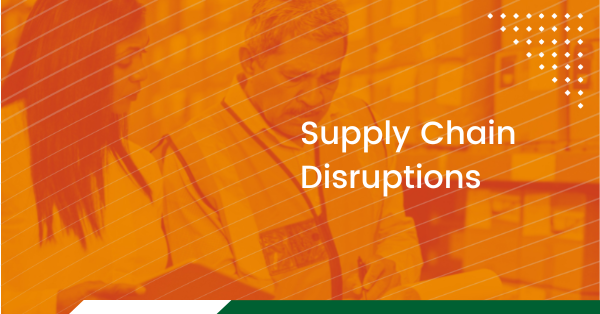As we all learned during the pandemic, supply chains are incredibly complex systems with many opportunities for disruptions. The disruptions can range from small risks, like manufacturing, to significant risks, like natural disasters. The supply chain process can be bumpy, so it’s essential to know the disruptions and how to avoid them.
What Causes Supply Chain Disruptions?
The COVID-19 pandemic
In 2020, the world experienced lockdowns due to the COVID-19 virus. The pandemic caused record freight rates, misplaced shipping containers, clogged ports, and other problems that disrupted the supply chain process. The pandemic has exposed many vulnerabilities and deficiencies in the supply chain that existed long before the lockdowns.
In 2021, the supply chain was hit hard again by worker shortages and the inability to keep up with the demand of consumers. In August 2021, according to the Bureau of Labor Statistics, 4.3 million workers left their jobs in the United States. Multiple supply chain industries were left short-staffed as COVID-19 cases rose. Many supply chains worldwide still have significant work to do to overcome the challenges exasperated during COVID-19.
Consumer demand on the rise
Due to the COVID-19 pandemic, consumer demand jumped. That’s especially the case for online shopping. When customers order an item online, they expect it to get delivered quickly. Unfortunately, the supply chain and transportation industry haven’t been able to keep up with demand, and businesses continue to struggle. To keep up with demand, companies must ensure they have the right technology and services within their warehouse. The right technology and services can allow supply chains to predict consumer demand and prepare for what’s to come.
Natural disasters
The COVID-19 pandemic has only been around for a few years, but natural disasters have been an ongoing problem for supply chains. Some natural disasters that alter the path of supply chains can be blizzards, earthquakes, hurricanes, tornadoes, tsunamis, and more. Natural disasters can shut down ports, cancel cargo flights, and create an uneven supply and demand process. Depending on the severity of the natural disaster, transportation may stop operating entirely and wait until it’s safe to run again, leading to shipment delays.
Natural disasters don’t just alter the locations they take place, but they affect the entire world. On top of COVID-19, supply chains also took a big hit by natural disasters. During 2020, natural disasters set a record for 22 events costing about $1 billion. Supply chains are no strangers to natural disaster effects and must respond accordingly all around the globe. Even though natural disasters don’t happen daily, it’s essential to know how to manage your supply chain when one hits your area.
Overcoming Supply Chain Disruptions
Even though supply chain disruptions cause costly problems for many businesses, you can take steps to mitigate the damage and delays caused by disorders.
Work with multiple suppliers and manufacturing partners
In any situation, it’s essential to have a backup. You will likely encounter some disruption caused by natural disasters at some point, so it can help to have multiple suppliers in other areas of the country to continue production and operations. If your business relies on one supplier, you could lose customers if there’s a disruption. Even though having more than one supplier is expensive, it’s worth it in the long run, so you don’t lose business and crumble during a bump in the road on your supply chain.
Coordination and cooperation
To have an efficient supply chain, everyone must work together. Effective supply chain management is crucial in understanding what’s happening in each department. Along with effective leadership, you can improve your profit and retain many customers. Your suppliers are most likely eager for change along the supply chain process, so this is an opportunity to work forward with them. Without coordination and cooperation, your supply chain will crumble if everyone is not on the same page.
Manage your safety stock inventory
It’s always important to keep track of inventory, but when a supply chain disruption occurs, you’ll want to know how much safety stock you need. Safety stock is the items you have in case of a stockout during high consumer demand. When your company is constantly out of stock with things, you’ll also lose customers and disrupt the supply chain process. To make customers satisfied, businesses can implement backorder shipping. Backorder shipping ensures that the item has a restock date and lets consumers know when it will arrive. Knowing the inventory in your store is crucial, but you should also keep track of the merchandise along the way and what needs to get ordered. The backup list will ensure preparation for a supply chain disruption, and you won’t be scrambling in a time of need.
Make The Most of Your Supply Chain
At PLS Logistics, our specialists commit to optimizing your supply chain and the streamlined costs that come along with it. We understand that supply chain disruptions can be frustrating, so we want to work with you to prepare for any roadblocks. Get a free quote with us today to improve your supply chain! You can also contact us to find out more information about how we optimize your supply chain and streamline costs.


